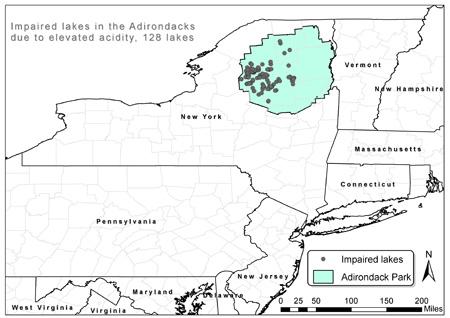Evaluation of the Use of Critical Loads to Mitigate Effects of Acidic Deposition to Forest Ecosystems in the Northeastern U.S.

Air pollution effects on ecosystems have been an environmental concern in the northeastern United States since the 1970s. Forest and aquatic ecosystems are sensitive to inputs of air pollution and have been impacted by atmospheric sulfur and nitrogen deposition. The concept of “critical loads” has been used in Europe for air quality management since the 1980s. A critical load is the input of air pollutants below which adverse ecological effects do not occur. The USDA Forest Service, National Park Service, Environmental Protection Agency, and some states are interested in using critical loads to guide air quality management to protect ecosystems from acid and nitrogen deposition.
NSRC researchers conducted three projects on development and application of critical loads to forest and aquatic ecosystems in the Northeast and beyond. Researchers used a computer model to determine critical loads of air pollutants for lake/watershed ecosystems in the Adirondack region of New York. They then applied the model to a watershed at the Hubbard Brook Experimental Forest in New Hampshire to examine how changing climate influences the values of critical loads. Researchers also developed critical loads for effects of atmospheric nitrogen deposition on different ecosystems across the United States.
Researchers found that critical loads of acidity and nitrogen are routinely exceeded in forest ecosystems of the Northeast. Under changing climate scenarios at Hubbard Brook, the sensitivity of the forest ecosystem to acidic and nitrogen deposition increases, decreasing the critical loads. This suggests that greater pollution controls may be needed to protect Northern Forest ecosystems from effects of atmospheric deposition under future changing climates.
